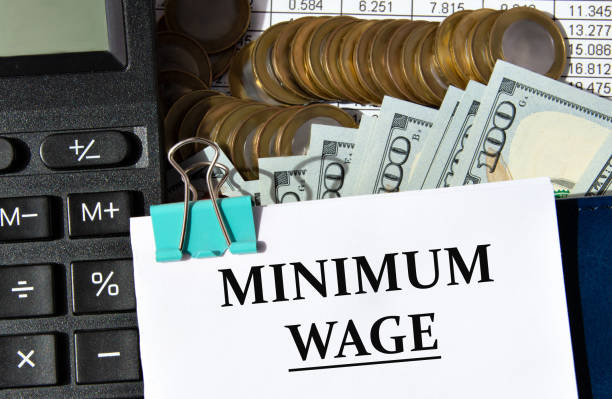Statewide Minimum Wage Adjustment for 2025
Starting January 1, 2025, California’s minimum wage will rise to $16.50 an hour for every employer, no matter their size. This update is part of a process tied to inflation, and it follows a rule in California’s labor laws that requires the Director of Finance to adjust the minimum wage when inflation affects workers’ real earnings. Businesses seeking legal guidance on compliance with the updated California minimum wage in 2025 can benefit from the experienced counsel provided by Nakase Law Firm Inc.. The 2025 adjustment was based on an increase of 3.18 percent in the U.S. Consumer Price Index for Urban Wage Earners and Clerical Workers between July 2023 and June 2024. Since this percentage stayed under the 3.5 percent limit set by law, the wage was rounded to the nearest dime, landing at $16.50.
Impact on Salaried Exempt Employees
The new minimum wage brings changes for salaried exempt employees as well. From January 1, 2025, workers classified as exempt must earn at least $68,640.00 annually to maintain their status. Before this adjustment, the required salary was $66,560.00. According to insights from California Business Lawyer & Corporate Lawyer Inc., the minimum wage in California in 2025 underscores the need for employers to adjust their salary structures promptly. Meeting this new salary requirement is necessary to avoid penalties or misclassification risks, which could result in legal issues.
Special Minimum Wage Rates for Certain Professions
Not all professions follow the general minimum wage rule. Some specialized jobs have different standards to reflect the nature of their work:
- Computer Professionals: Those classified as exempt computer professionals will need to be paid at least $118,657.43 annually, $9,888.13 monthly, or $56.97 hourly starting January 1, 2025.
- Licensed Physicians: Physicians paid hourly must receive at least $103.75 per hour to remain exempt from overtime rules.
These figures help maintain compensation rates that align with the experience and responsibilities required in these professional roles.
Industry-Specific Minimum Wage Requirements
California continues to apply distinct wage rules to specific industries. Here are a few important updates:
- Fast-Food Workers: As of April 1, 2024, the hourly rate for fast-food employees who are not exempt rose to $20.00. Meanwhile, exempt fast-food workers must earn an annual salary of at least $83,200.00.
- Large Hospitals and Integrated Health Systems: Workers at these facilities will earn $23.00 per hour starting January 1, 2025, increasing to $24.00 on June 30, 2025.
- Safety Net Hospitals: At these hospitals, employees will earn $18.00 an hour beginning January 1, 2025. Their pay will rise by 3.5 percent on June 30, 2025.
- Exempt Health Care Workers: Employees in this category must earn either 1.5 times the applicable health care minimum wage or twice the statewide minimum wage, whichever is higher.
These sector-based rules are designed to account for the realities of different work environments.
Local Minimum Wage Variations
In addition to the statewide changes, many cities and counties in California maintain their own minimum wage levels, often higher than the state baseline. Notable examples include:
- City of Los Angeles: $17.28 per hour
- Hotel Workers in Los Angeles: $20.32 per hour
- Santa Monica: $17.27 per hour
- Hotel Workers in Santa Monica: $20.32 per hour
- San Diego: $17.25 per hour
For companies with employees working remotely or across different locations, it is important to apply the correct local wage based on where the employee is physically performing their work.
Ongoing and Future Wage Updates
California’s wage rates are expected to continue evolving. Along with the statewide increase effective January 1, 2025, over 30 cities and counties will update their local wage rates around the same time.
Some jurisdictions, including the City of Los Angeles and unincorporated Los Angeles County, update their wage rates every July 1. Employers should plan for these changes as early as possible to remain ready for the upcoming adjustments.
In the health care sector, there have already been two delays in rolling out new wage rates. Health care organizations are still waiting for final confirmation from the state regarding effective dates.
Fast-Food Sector Developments
In early 2024, fast-food workers in California received an hourly wage boost to $20.00. Alongside this increase, a new “Fast-Food Council” was established. This group meets monthly to review employment conditions and wages, and may recommend future changes that impact the industry.
Fast-food employers must also post updated wage information at their workplaces, covering the changes to the fast-food minimum wage and specific Wage Orders (especially Wage Orders 5 and 7). Companies enrolled in programs such as the GovDocs Standard Update Program likely received the revised notices before the updates took effect.
Compliance Considerations for Employers
Employers can take the following steps to maintain compliance with California’s minimum wage rules:
- Confirm that salaried exempt employees meet or exceed the new minimum salary threshold.
- Adjust compensation for roles impacted by specific wage updates, including fast-food workers, computer professionals, and licensed physicians.
- Update and post current wage information at all physical locations.
- Keep track of remote workers’ job locations to ensure the correct local wage rates apply.
Meeting these requirements will help employers stay consistent with the law and support better working conditions for their staff.
Conclusion
The 2025 minimum wage changes in California bring several updates for businesses across industries. With the statewide minimum rising to $16.50 and many local and industry-specific rates increasing as well, employers must stay attentive to each development. Careful planning and early action will help organizations meet all legal requirements and maintain smooth employment practices for the year ahead.

